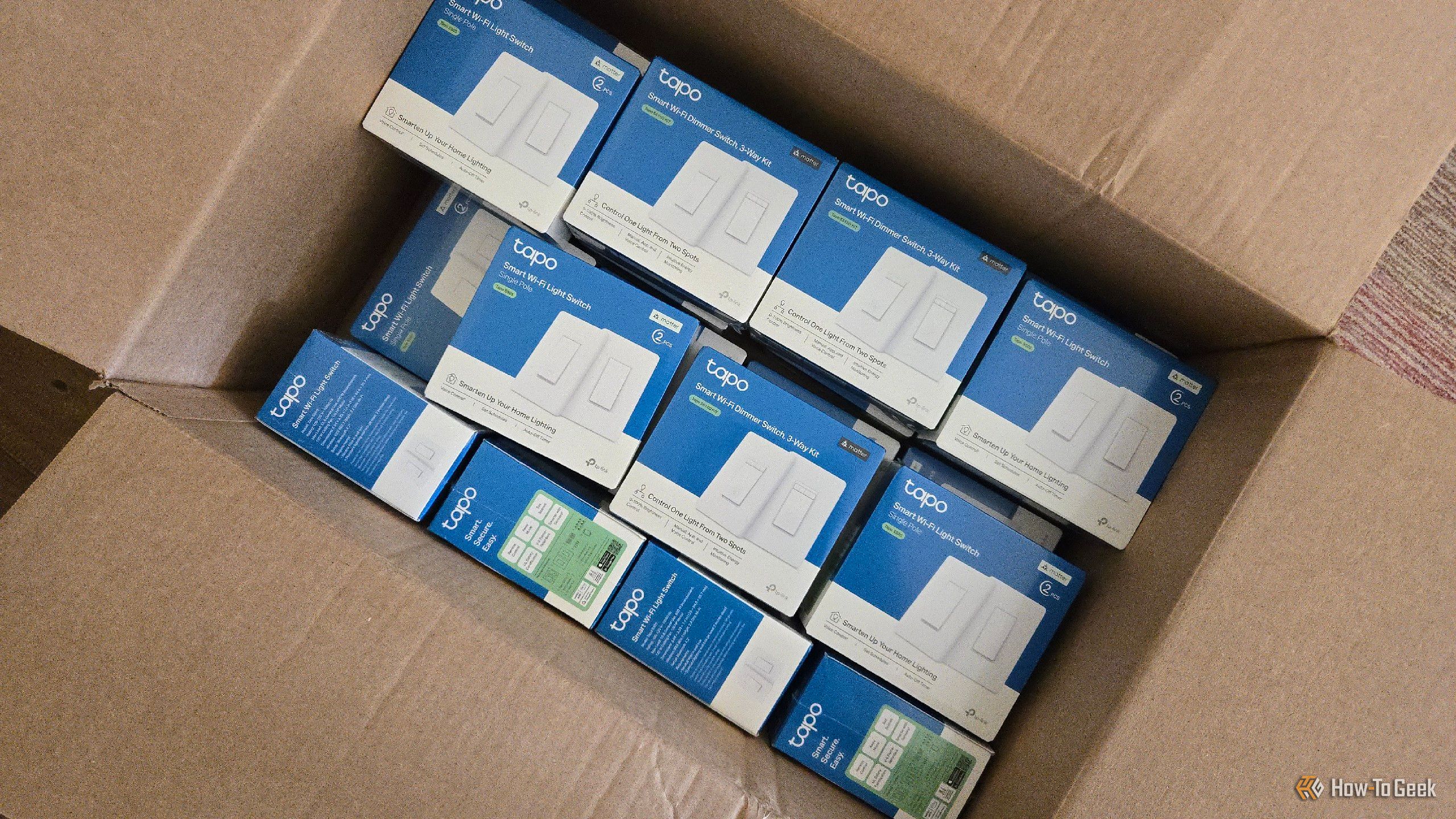I’ve been busy this year morphing my home into a smart home but I don’t have unlimited money, and I’m being frugal with the brands that I pick. This small gadget has given my home climate controls a big boost, and it cost me less than $20.
It’s the SwitchBot Meter Plus
SwitchBot Meter Plus is the short name, the one you’ll likely see if you look for the product online. The front of the box reads SwitchBot Thermometer and Hygrometer Plus. Yeah, I’ll stick with the short one.
If you’re unfamiliar with SwitchBot, the company makes much of what a smart home might need, ranging from universal remotes and robot vacuums to smart roller shades.
The Meter Plus is a small, battery-powered sensor that measures the surrounding temperature and humidity levels of the room it’s placed in. What makes the device “smart” is your ability to view this information from your phone and track historical changes over time. This particular model is Matter-compatible, so it works with any smart home ecosystem.
Now let’s get into what makes this awesome.
I Know the Temperature Far From My Thermostat
Temperature can swing wildly from room to room. I live in a wide, single-story home. The thermostat is in the hallway a few feet from the living room. In the winter, it can be warm in the living room but frigid in our bedroom. With a thermometer in my bedroom, I can now know precisely what the delta between the two rooms actually is.
This is something any thermometer can do, for sure. A smart thermometer makes this information available on your phone, and Matter-compatibility means it’s now data I can view from the smart home hub built into my Samsung Frame TV.
I Can Adjust My Smart Thermostat Based on Any Room
You don’t have to study any of that data if you don’t want to. You can simply command central air to come on not only when the thermostat hits a certain temperature but when any connected thermometer does instead. This occurs using automations, like the one I’ve created in Samsung SmartThings.
At under $20 each, I can gradually put one in each bedroom, our home office, or any other room where we spend extensive amounts of time. If it’s a place we find ourselves feeling far cooler or warmer than the central thermostat would suggest, it’s a place that can benefit from a smart thermometer.
This is a feature that Google actually developed into its Nest Learning Thermostat (priced at just shy of $280) if you pair it with Nest Temperature Sensors (which cost $40 each). I could get around five Switchbot Meter Plus for the price of just two Nest sensors, with each one serving as a capable standalone device having its own useful screen and the ability to read more than just temperature (Nest sensors are just screen-less pucks). My thermostat didn’t cost nearly $300 either. I bought a Matter-compatible Honeywell Smart X2S for $80 instead.
Such a feature would have been a joy in our previous 50-year-old split-level home, whose bottom floor was often extra frigid or toasty while the main living area upstairs was comfortable.
I Can Monitor Temperature Shifts Over Time
Adjusting the thermostat to compensate for variations between rooms is a brute-force approach that can ratchet up your monthly energy usage. It’s better to figure out how air moves through your home and take practical steps to mitigate issues.
This is where having data can be helpful, especially for those rooms you use infrequently. With this cheap little smart sensor, I can open the SwitchBot app to see how the temperature has shifted at different times of day and throughout the year.
With thIs kind of information, I can better plan out where it might be worth putting fans to circulate air from my wood stove in the winter or what times of day I should close our shutters in the summer.
Don’t Forget About Humidity
I’ve focused on temperature, since that’s the information I’m most interested in, but the Meter Plus also measures humidity levels. I’ve started paying more attention to that number as I enter our bedroom. We tend to keep our windows open, and I watch as the humidity rises floating a storm.
I’m curious to see how low the number drops in the winter, when cold dry air starts to be a problem for us. The sensor will tell me when the air is dry and when I should run a humidifier, something I’ve never been a good judge of.
A smart home can sound financially out of reach, but these days you can fill a house with smart lights, switches, and sensors for the price of a smartphone—and it’s all thanks to cheap but functional little gadgets like this (combined with regular sales throughout the year).
In the past month, my wife bought a Samsung Galaxy Tab S10+ to replace her aging iPad, and I ordered 50 smart switches to replace every wall switch in our house. It may come as a surprise, but converting all of our home lighting into smart lighting was not the more expensive of those two investments.

Related
I Bought 50 Smart Home Switches at Once—Wish Me Luck
They were on sale, okay?









Leave a Comment
Your email address will not be published. Required fields are marked *